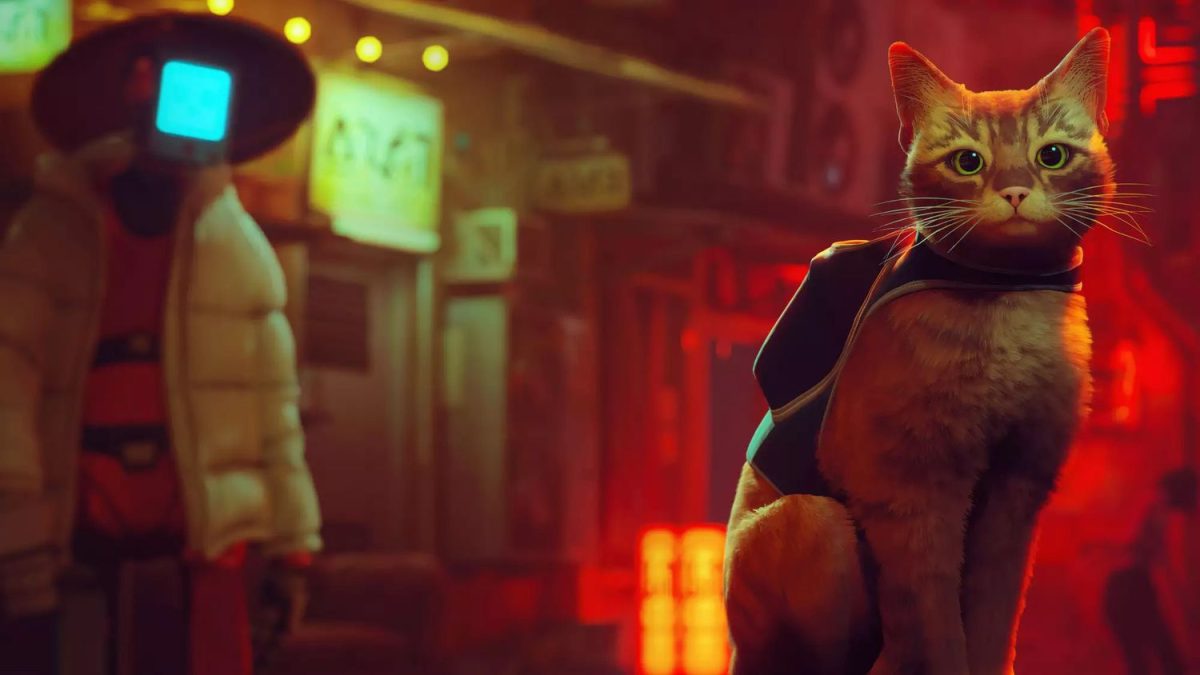Mysterious streets, towering cathedrals and churches, foggy forests, and ancient abandoned castles all inhabited by strange yet vicious creatures: the world of Bloodborne. A spiritual successor to the game Demon Souls, Bloodborne takes place in Yharnam, a victorian city overrun by a plague that turned people into beasts. In this game players play as a hunter who tracks down and slaughters beasts, seeking a way to end the corruption.
From the opening scene, Bloodborne is weird and only gets weirder. If you dislike blood, violence, or Lovecraftian creatures, this game isn’t for you. However, the combat system and mechanics are planned wonderfully and executed excellently and the atmosphere is perfect.
I won’t say too much about the story to avoid spoilers, but the game is entertaining and engaging. The beginning creates an air of mystery and raises questions about why people are transforming into beasts, how it started, and more importantly, how to stop it. Discovering the answers along with simply exploring the world and finding new areas and secrets is one of the most rewarding experiences in the game. The locations are varied and entertaining, ranging from cluttered streets and alleys to large forests and old castles and universities. Each area is usually gated by a boss, which makes the fights compelling because you are rewarded with story and an interesting new area. However, about halfway through the game I was slightly lost and confused about the story. I know it is complex, and if I read more descriptions and explored more I could probably be alright, but I still think it declines in quality halfway through. Overall, the story is decent and compelling, even halfway through I still wanted to know what was happening and what was going to happen.
Looking at the combat, several changes promote a more aggressive and faster experience from previous games systems such as Demon Souls, Dark Souls, and Dark Souls 2. A new mechanic allows players to gain health back for a short time after receiving damage by inflicting damage to an enemy. This mechanic forces players to make a choice of whether to play safe, back up and heal, or try to attack on lower health to recover health. Another change was that stamina (points used to do any action like attack, run, dodge) regenerates faster and actions take less stamina, allowing faster combat. They also removed all but one shield which only blocks about 60% of damage and takes a lot of stamina to use, rendering it useless.
In addition to good combat, the enemy design is excellent, which is a problem I had with Dark Souls 2 as a decent amount of enemies felt generic. All the enemies in Bloodborne felt handcrafted and unique to their areas as if they belonged there. This extends to the bosses with many terrifyingly exhilarating experiences for the most part. Most bosses have different stages which help contribute to this, as they get more aggressive or use new moves after they fall beyond a certain amount of life, like when (small spoiler) a spider like boss rips two of its own legs off at about a quarter life, nearly doubling his range and causing him to act more frantically. However, one boss breaks all these patterns and should be thoroughly redesigned as it promotes an overly defensive playstyle which goes against the games theme. The main problem was that the boss summoned minions and backed away with the minions guarding it. If players get too impatient then the boss or a minion could possibly kill them in one hit or in a flurry of quick attacks. Barring this boss, the rest are well executed and reasonably challengeable.
While Bloodborne gets many things right, several things are a step backwards. My main complaint with the game is the lack of weapons and gadgets (in essence spells) available to use. The developers introduced transformative weapons to increase movesets and add depth to combat. Basically, most (except one that I am aware of) weapons can transform into a different type of weapon, like a shortsword could be the hilt of a greathammer and in the middle of combat the player could switch between the sword and hammer. While this is a neat edition, having so few weapons harms the re-playability and creativity in previous games. In Bloodborne, if players want to use daggers, they only have one choice, if they want to use a katana, they only have one choice, compared to over 40 different weapons in previous games. However, this is an easy fix, the developers simply need to add in more weapons, and if there is any downloadable content this will surely happen.
Another problem I had was with the healing item system. In Demon Souls players can heal by eating grass (a consumable item in your inventory) which they can buy from merchants or farm. This was tedious as it created time where all players do is try to get grass. However, Dark Souls introduced the estus flask, which is a healing item containing charges that replenished when players die or rest at a bonfire (checkpoints). Bloodborne changes it back with blood vials which are a consumable healing item that enemies drop or can be purchased in a shop. The old problems are back with this, as I did spend some time farming blood vials when I was stuck on several bosses and needed more supplies. The estus system is an improvement and the creators should have stuck with it.
While the story and atmosphere are exceptional, the lore is not. In Dark Souls (not Dark Souls 2) the world had a rich established backstory with notable characters and intriguing stories such as the mysterious Iron Tarkus. Overall, the backstory for Bloodborne is not as well established or intriguing as the previous games. This comes with a caveat though, as the game is still new and a lot of the lore could simply have not been discovered or pieced together yet. However, Bloodborne captures the dynamic non player character system which I loved about Dark Souls. Other friendly characters players meet change and have their own objective in the world, whether it be finding their master, killing rogue hunters, or murdering other characters. This reminds me of the original Dark Souls where the non player characters each had their own goal in the world and would pursue it, sometimes leaving players unexpectedly or placing them in a bad situation. Overall, the lore is lacking but the memorable dynamic characters help bring the world to life.
Another disappointment is the player versus player experience. In Demon Souls and Dark Souls you could invade a player if they were in a human state. However, in Bloodborne, players can only invade if there is a bell maiden in the area which occurs naturally at two spots in the game, if people try to summon help from other players, or rarely if someone else tries to invade. The downside to this is that most of the time if players are not invading in two specific areas they are fighting multiple opponents, and while this can be fun, for the most part it isn’t as they team-up and usually, from my experience, simply outheal you. To add to this, invaders and cooperators have 25-33% reduced health which compound the problem. I liked the previous games system better where invaders could invade anyone human, which could mean fighting two or three against one, but the invaded player could simply play without restoring humanity and never be invaded (in Dark Souls 1 at least). There still can be fun fights and skillful opponents, but the change hurts random invasions since if people simply play alone they will never get invaded barring two areas meaning the invader will usually be against multiple people. This takes away from the game’s overall experience as well since people can’t invade at any minute when the player is alone. The old invasions system created a lot of tensions in Dark Souls, since players never knew when someone could invade while going through an area (if human).
However, the developers introduced a new system, chalice dungeons, to keep the game interesting and intriguing. Players use chalices to create an isolated level which contains multiple levels and bossfights. There are many different depths and areas for the dungeons and completing one level usually unlocks another, more difficult chalice. The interesting part is that players can create randomly generated dungeons and other players can attempt them through a search and download procedure in game. Additionally, there are sinister chalices which allows for invasions in the dungeons and allows players concerned with invasions to find similar people to fight. I tried a few of the dungeons and while they are fun, I found that the random ones lacked the hand crafted aspect of the rest of the game, which was to be expected. Chalice dungeons are an interesting and innovative way to keep the game fresh and exciting.
In regards to performance the game runs fine. I had a couple of problems where, if I turned around too fast or entered a new area, I could see some objects still rendering, but only for a second. Apart from this there was no noticeable drops in framerate or other issues that I found. However, I heard there was a glitch in multiplayer in one specific area that halted story progression, so there are still kinks in the game which need to be ironed out.
Overall Bloodborne is many things. The game is great, but has several flaws which are a step backward and subtract some from the overall experience of the game. If you dislike violence or blood, don’t even consider getting it. However, if you like or aren’t bothered by those, it is a wonderful game overall which is definitely worth picking up.



